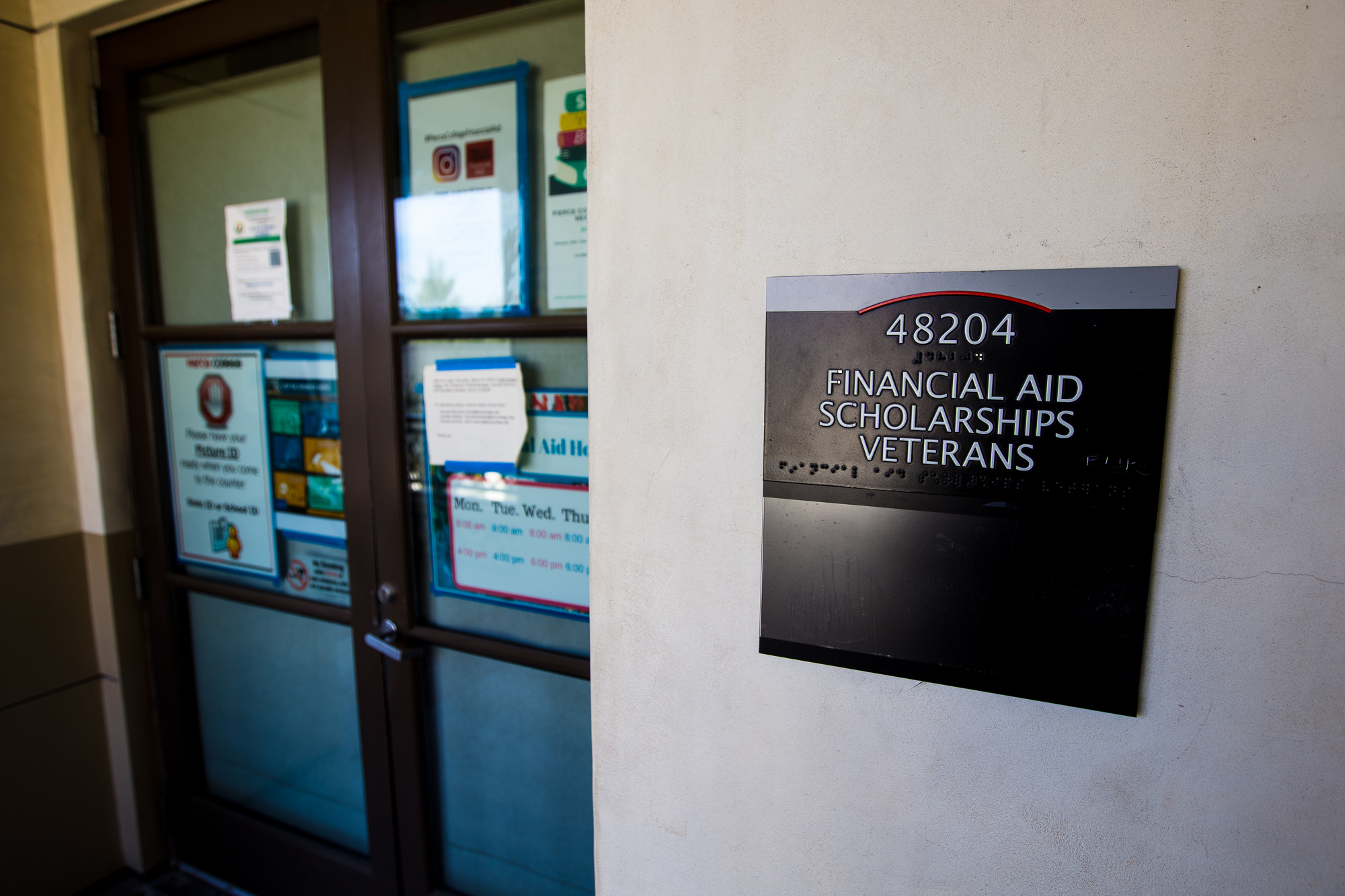More than a year into the pandemic, the higher education sector continues to see a trend in the decline of applications for financial aid, disproportionately impacting low-income students.
The belief behind this drop is the disruption the COVID-19 crisis brought, but there are other obstacles students must overcome to have access to these grants.
Pierce College President Alexis Montevirgen said that he doesn’t attribute the pandemic as the only reason behind the applications decline.
“Part of the difficulty is the arduous process of applying for financial aid,”Montevirgen said. “How can we simplify it? I think we’ve begun addressing some of these things.”
According to recent data from the California Financial Aid Commission, the California Community Colleges reports that “applications for Federal Student Aid (FAFSA) completions among graduating high school students are down by 11 percent (19,330) compared to this same time last year.”
Additionally, the Public Policy Institute of California reports that for the 2020-2021 enrollment cycle only 38.6% of California’s high school seniors completed the Free Application for FAFSA which is about a 10 percentage point drop from the previous year..
California Community Colleges Chancellor Eloy Ortiz Oakley said there are options for financial aid for students.
“While there are many types of financial aid available for California community college students, most financial aid is contingent on filing a FAFSA or California Dream Act Application,” Oakley said.
Taft High School senior Amanda Maturino plans to attend Pierce in the fall and major in psychology. Maturino said she was driven to pursue psychology after the suicide of her childhood friend.
“Everything I will do as it pertains to education and hopefully being a psychologist, I will dedicate in my friend’s honor,” Maturino said. “I could definitely say it has been an inspiration because it made me really open my eyes to see what people really go through that nobody knows about.”
Maturino said she sees community college as her best choice. However, she also said that she has very little knowledge about her other financial options.
“I haven’t really talked about it with my counselor, as we only discussed signing up,” Maturino said. “But ever since the pandemic, I haven’t really talked or called my counselor to talk about college. So as of right now, I don’t really know much about grants.”
People in leadership positions in higher education, including counselors and advisors in community colleges and high schools in California, are failing their students by not proactively engaging them about grants and scholarships.
There is room for improvement, but without taking a concrete step forward, the low-income sector of students will cut them off awareness to eligibility to the large pool of government aid available to them.
There is also the option of making FAFSA or Dream Act enrollment as a requirement for high school graduation.
Another segment of the student body is the undocumented students who do not qualify for federal grants but are missing out on scholarships and aid available to them.
California Student Aid Commission Executive Director Marlene Garcia said undocumented students are eligible for financial aid.
“The Cal Grant deadline is especially important for undocumented students who must complete the California Dream Act Application by March 2 in order to be eligible for state-based aid,” Garcia said.
Dream Act applications are also down by 15 percent (2,712) compared to last year.
Dream Resource Center Lead Kimberly Castillo said she noticed more undocumented students requested appointments to receive help filling out their applications.
For these non-traditional students, grants have become more competitive with so many hurdles or requirements barring students from the much-needed aid.
“I have heard in the past that students are sometimes afraid to apply because the application asks for tax information, and sometimes students do not have access to their parents’ tax transcripts,” Castillo said.
Castillo also points out that a decline in financial aid applications is connected to just plain unawareness.
Maturino, a first-generation college student, was also affected by the pandemic. Her mother is on disability, and they both depend on her stepfather for additional income.
“I do not think I can afford classes if I do not have some form of financial help,” Maturino said.
There is an evident correlation between missed out opportunities and the way schools and counselors approach students interested in continuing their education to pursue a degree.
“I’d like to work with the local high school so that perhaps when they do application workshops to college,” Montevirgen said. “FAFSA application goes hand in hand with it and it’s already done and filled out so that students don’t need to, and so every high school graduate is already familiar with the process.”
Economic need is an aspect of everyday life that has become more prominent with the pandemic. But every year, there is opportunity to design mass campaigns to call attention to these grants that can take away the burden of economic need for those pursuing higher education.
Oakley recognizes the difference money can make in the life and aspirations of a college student.
“For too many students, finances are the main barrier to achieving their college goals,” Oakley said. “However, every year there is money left on the table because students simply don’t apply.”
Oakley emphasized the urgent need to turn this trend around.
“If we don’t get more students to complete the FAFSA, we could see a lost generation of tens of thousands of Californians who are left behind and cannot pursue their college education because of the lack of financial support,” Oakley said.




